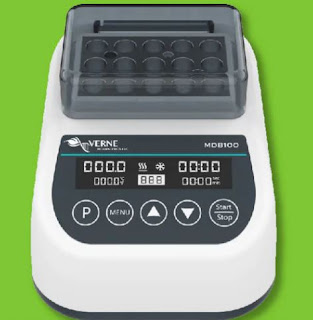A Suspicious Pathogen Is Harmful To Cannabis Crops | Verne Bioanalytics
Marijuana growers around the country are dealing with a widespread sickness that is damaging their plants. The illness is caused by a HPLVD Testing. Once it left California, it traveled all across the country. Sadly, the diseased plants have infected other crops, defeating the purpose of the plants crossing state lines—to increase the legitimate markets. The illness was first made public in 2019, but many think plants have been infected since at least 2014. Dubbing, which is defined as stunted development and a deficiency in both trichomes and secondary metabolites, has been the subject of reports dating back to 2014. All of this reduces the plant's potency when it is smoked or consumed. Furthermore, HPLVD Testing in cannabis plants is essentially nonexistent.
The absence of appropriate sanitation for both recreational and medical marijuana contributes to the increase of HpLVd infection. To stop the illness from spreading quickly, new plant kinds should be quarantined in addition to being sanitized. HpLVd can be transmitted from tools to plants or from plants to tools. This indicates that farmers should clean their equipment after each usage. A 10% bleach solution is the most efficient disinfectant for eliminating germs. Gloves must frequently be replaced since they are another vehicle for the pathogen's propagation.
The Upcoming Cannabis Challenge
Unfortunately, the infection may spread even when there are no symptoms since it already exists. Because of this, it's even more crucial to follow strict cleanliness and plant quarantine. Even though the plants could seem healthy, the illness might be latent. In fact, plants test positive for viroid infection even if they don't exhibit any symptoms, which has become a major issue in the cannabis sector and will continue to have an impact on it for a long time. Keeping the mother stock and growing from it is another issue. These plants might be seen transmitting the virus continually if the mother chambers are not kept clean. In order to create a strong growing supply of mother plants, tissue cultures must be examined for HpLVd and other diseases.
A significant issue arises when some mother plants test positive and others do not, demonstrating that the illness may not necessarily spread to the entire plant. This implies that you may test a plant with Hops Latent Viroid Test Kit and find it to be negative without realizing that other portions of the plant are contaminated. Many months later, the plant may test positive. Multiple negative tests are thus required in order to declare the plant healthy.
HPLVD Testing Procedure
The polymerase chain reaction (PCR) test is the most effective approach to HPLVD Testing. A Hops Latent Viroid Test Kit determines if a certain sequence of DNA or RNA is present or absent. This indicates that a PCR test can be developed to detect HpLVd in particular. Because the PCR test is not yet standardized, certain Hops Latent Viroid Test Kit is more useful than others. Growers must implement stringent rules for plant quarantine and cleanliness in the meantime.



Comments
Post a Comment